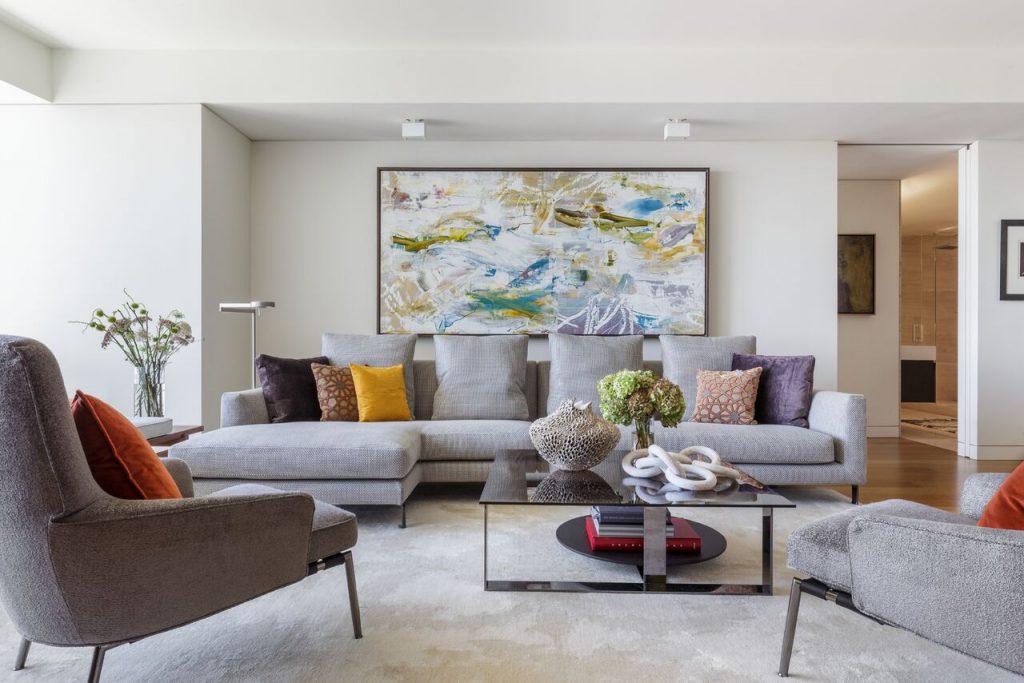We like to call ourselves “designers behind the scenes” because we combine an aesthetic eye with organization expertise. We don’t, however, pretend to be interior designers – we make sure to call in the professionals for that! Our friend Sean Juneja at Decor Aid kindly answered a few questions to help us understand the design process and how organization fits in.
NM: We’re so excited to pick your brain! First of all… what is Decor Aid & how did it begin?
SJ: We started Décor Aid when we were trying to decorate our own homes and had a hard time finding reliable, talented, and affordable interior designers that were willing to work on projects that were under six figures.
To address this, we set out to only work with the best project managers, interior designers and renovation experts across the nation who pride themselves in delivering life-enhancing design services, while ensuring fixed transparent design fees.
Before we disrupted the industry, the world of interior design was only catering to the 1% while charging them enormous design fees and overcharging them for furniture. To keep the process hassle-free, each client and designer works alongside a dedicated project manager who oversees every aspect of the process so our client won’t have to.
Overall, we simply wanted to make finding the best local interior designers at the best prices all the easier so everyone can have access to brilliant, inspiring design for their homes and commercial spaces.

NM: We just love that mission! What is Decor Aid’s process for design?
SJ: We approach all of our projects, no matter how short-lived or large-scale, with the same commitment and white-glove standards that inspired us to modernize the interior design process.
We start every project with a complimentary in-person consultation where we walk through our client’s spaces to better understand what they have to work with, their goals, and the right direction to move forward.
From there, our interior designer will create a comprehensive plan highlighting all costs and projected design fees. Our interior designer will then work with a dedicated project manager and any renovation experts needed so our clients won’t be burdened by collaborating with a small team on a daily basis until the project is complete.
NM: That sounds like such a relief for your clients. How important is storage planning in your spaces?
SJ: Savvy storage solutions are essential in any size home, but even more so in small challenging spaces. Clever storage ideas can lead to a better daily life where you know where everything should go instantly, making the tidying process all the easier.
Plus, there are so many attractive looking, well-designed storage options available as of late, so there’s almost no reason to ignore this highly beneficial element of the interior design process.

NM: We totally agree. Organization should be beautiful and functional! What are the most requested spaces by your clients?
SJ: Since they are often the most used rooms in any home where the investment instantly seems more justifiable, a majority of our clients are looking to elevate their common rooms like their kitchen, dining, and living rooms.
And though we do provide room refreshes and are here to help with any sized projects they have in mind, there’s nothing better than completely updating an entire home for a more consistent and well-judged look.

NM: So true – we love completing entire homes too! What is one thing you wish everyone knew about interior design?
SJ: That it’s nearly impossible to decorate a home smartly overnight and that much more goes into the interior design process than simply choosing beautiful furnishings.
You’d be surprised to know that we’ve had clients who come to us thinking that we can completely decorate their massive homes within weeks, which would be incredibly challenging to get right for the long run.

NM: That’s very important. So now how do we start to hone in on our personal home style?
SJ: Zeroing in on your interior design style isn’t as hard as people think. If it doesn’t come naturally to you, research homes, brands, and artists that catch your eye, and explore the foundations of design history to partake in the collaboration process.
As a starting point, you can easily create mood boards on Pinterest to see everything you’ve collected together while weighing in on what could work for your lifestyle and tastes.

Thank you so much for taking the time to answer our burning questions! We feel like we have a better grasp of where our worlds overlap and when we need to call a professional. 😉
xx
the NEAT team


